There’s been a lot of talk about the new “free beach access law” currently moving through Mexico’s federal government. There is a lot of excitement and naturally, a lot of confusion.
What does the new law actually propose? And how might it affect places like the Riviera Maya, where beachfront hotels, beach clubs, and gated communities dominate much of the coastline?
Here’s what the reform proposes, and what it would mean locally, based on official sources and reputable reporting.
Beach Access Currently Under Existing Mexican Law
Table of Contents
As we know, by law, all of Mexico’s beaches are public property. They fall within the Zona Federal Marítimo Terrestre (ZOFEMAT), a federal strip of land along the coast that must remain open for public use. This is what you commonly hear referred to as the “federal zone”.
This principle is backed by the Mexican Constitution: Article 27 declares beaches and the ZOFEMAT to be federal property for the benefit of everyone.
The General Law of National Assets reinforces this in Article 8, which defines beaches as national assets, and in Article 127, which requires adjacent landowners to allow free access whenever there is no other public entry nearby.
To make this concrete, a 1991 regulation—the Reglamento para el Uso y Aprovechamiento del Mar Territorial, Vías Navegables, Playas, Zona Federal Marítimo Terrestre y Terrenos Ganados al Mar—obligates municipalities and SEMARNAT to ensure that public beach access is provided at least every 500 meters wherever development or concessions exist, unless natural barriers or environmental protections make it impossible.
On paper, the rules seem clear: regular, free access points must be available along the coastline.
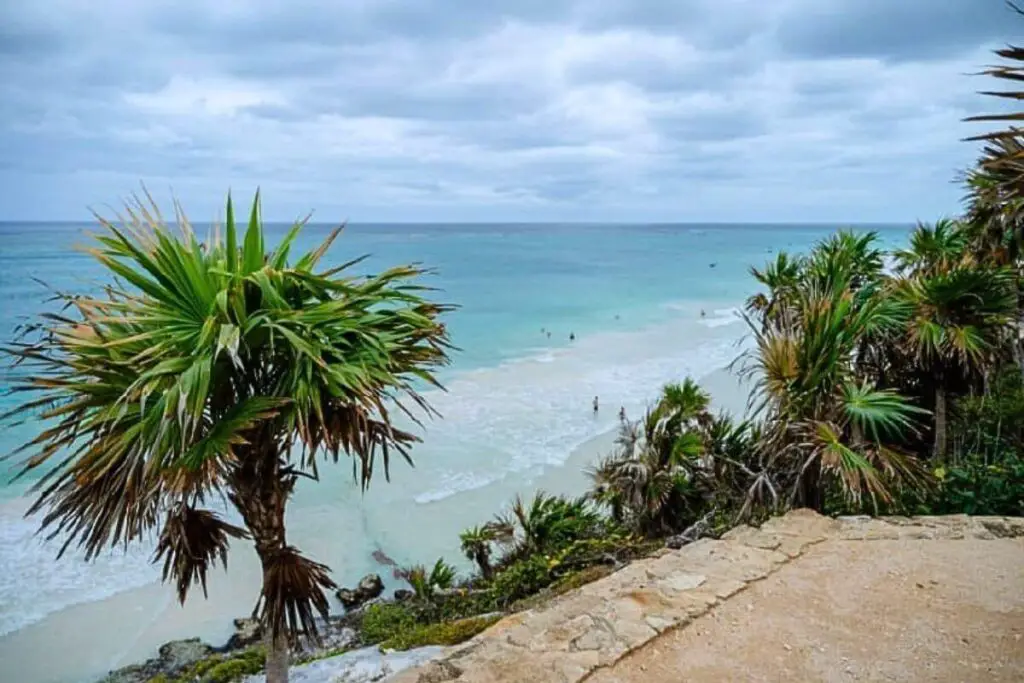
The Law Reforms and What They Propose
The Chamber of Deputies has approved a reform to two key laws: the General Law of National Assets and the General Law of Ecological Balance and Environmental Protection. (Linked above)
The reform guarantees free, permanent, and unrestricted access to Mexico’s beaches and the adjoining Federal Maritime Terrestrial Zone (ZOFEMAT).
It is important to note that the measure still needs to pass the Senate and be published before it takes effect.
Key Rules in the Text
Under the proposed reform, access to beaches and the ZOFEMAT may not be restricted or conditioned except for reasons established in law, such as environmental protection or public security.
Authorities will be required to ensure that there are clearly signposted public access routes to the beach, and the charging of fees simply to enter is explicitly prohibited unless allowed under specific legal or regulatory exceptions.
Concessions and permits must include provisions for public access, and if an operator violates those conditions, their concession could be revoked.
For beaches located within protected natural areas, SEMARNAT will have to guarantee at least one free-entry day each week, while still respecting conservation rules.
Once the law comes into force, agencies will have ninety days to bring their regulations into line with these new requirements.
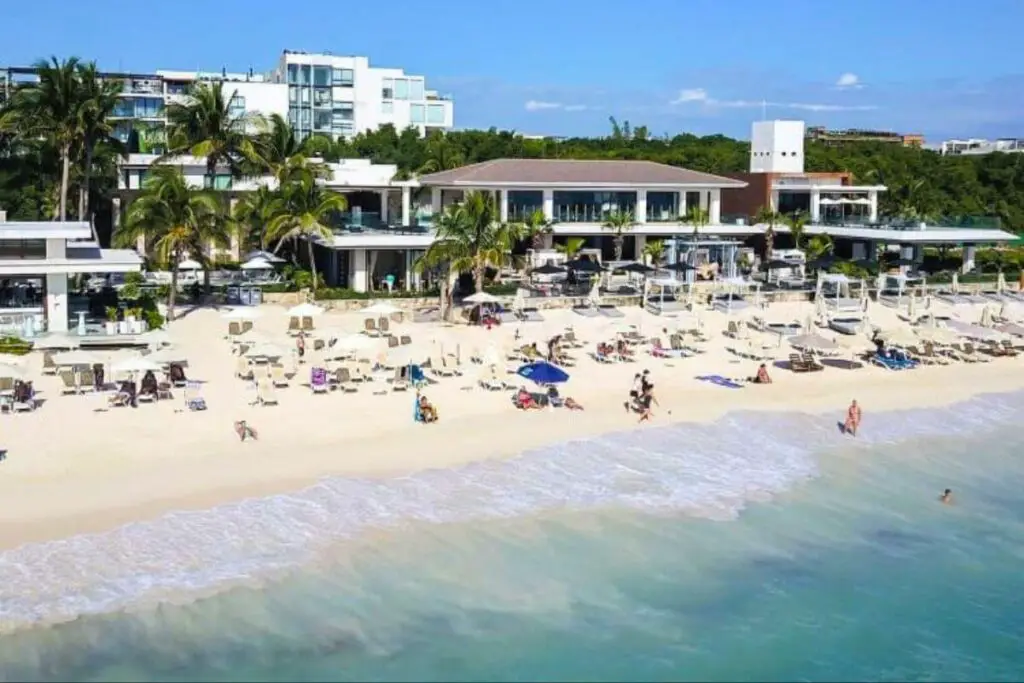
Implications for The Riviera Maya
For hotels and beach clubs, this means they will still be able to operate within their concessions, but they will not be allowed to block public passage along the shoreline, refuse entry at designated public access points, or charge so-called “access fees” just to reach the sand.
Quintana Roo has already seen examples of local enforcement in action, such as when authorities in Playa del Carmen removed lounge chairs and other obstructions at Mamitas Beach to keep the beach corridor open. The reform would strengthen this kind of enforcement and apply it consistently across the country.
For private property owners, it is a reminder that owning land inland of the federal zone does not extend ownership onto the beach itself. The ZOFEMAT remains federal property, which means property owners cannot fence it off, privatize it, or deny public access where entry points have been designated.
For protected environmental areas, such as Tulum National Park (Jaguar Park), the law would require the implementation of at least one weekly free-entry day. This comes in response to recent disputes over restricted or paid access in Tulum, and the reform is intended to curb such practices by establishing a uniform national standard.
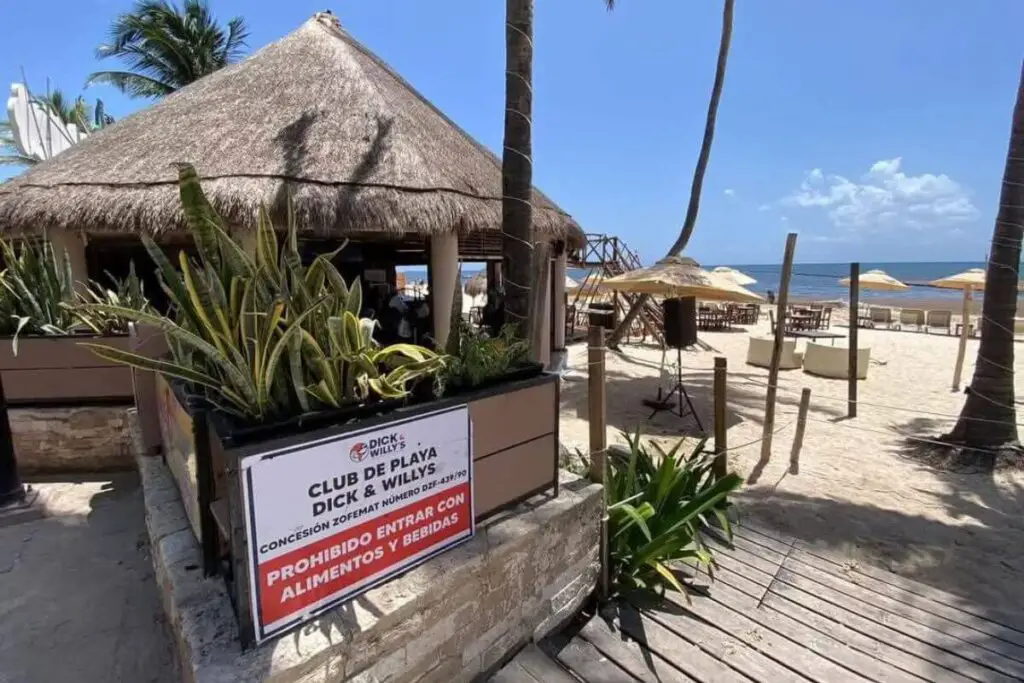
Local Context & Enforcement
In Quintana Roo, ZOFEMAT officials and municipal authorities have already been responding to complaints by removing barriers and reminding operators of their obligations to keep beaches open to the public.
What this reform does is codify those practices in federal law, tightening the requirements and making them both clearer and more enforceable nationwide.
How the New Free Beach Access Laws Play Out Locally
Tulum
In Tulum, beach access has been one of the most contested issues, especially around Jaguar Park where high entry fees and restrictions have angered residents and visitors alike.
After months of tension, the city struck agreements with local hoteliers: according to a list released by the City Council, 13 hotels and three beach clubs will now allow the public to pass through their properties to reach the sand.
The arrangement guarantees access with no entrance fee and no minimum consumption, a sharp change from long-standing practices in the hotel zone.
The new rules set access hours, depending on the property, and closures are permitted only when a private event is underway. Visitors are also required to respect ZOFEMAT guidelines, which prohibit coolers and cooked food.
At the same time, municipal authorities announced a new public beach entry point one kilometer past Jaguar Park, expected to open once the area is cleaned and prepared. These shifts come after business owners blamed this summer’s steep tourism decline in part on access problems.
Taken together, the agreements mark a significant concession from private operators in Tulum’s hotel zone, and a first step toward restoring regular, fee-free public access to the coastline.
Xpu-Há
Although Xpu Ha beach itself is legally public, the routes that lead to it have long been controlled by private owners. Currently, visitors to Xpu-Há must cross private land—whether it’s a road, a jungle path, through campgrounds or the property of a beach club—and pay a fee just to reach the sand.
Under the proposed reform, those tolls or “crossing fees” could become illegal, except in cases where a restriction is clearly justified for reasons of “environmental protection or public safety”. What that means exactly is anyone’s guess but certainly leaves room for “interpretation”.
The new law would require that public access routes be guaranteed and clearly signposted. In practice, that means Xpu Ha landowners who currently control access may be required to open their corridors, negotiate right-of-way agreements with beach club owners who hold the concessions, or even see those pathways formally declared public under the new rules.
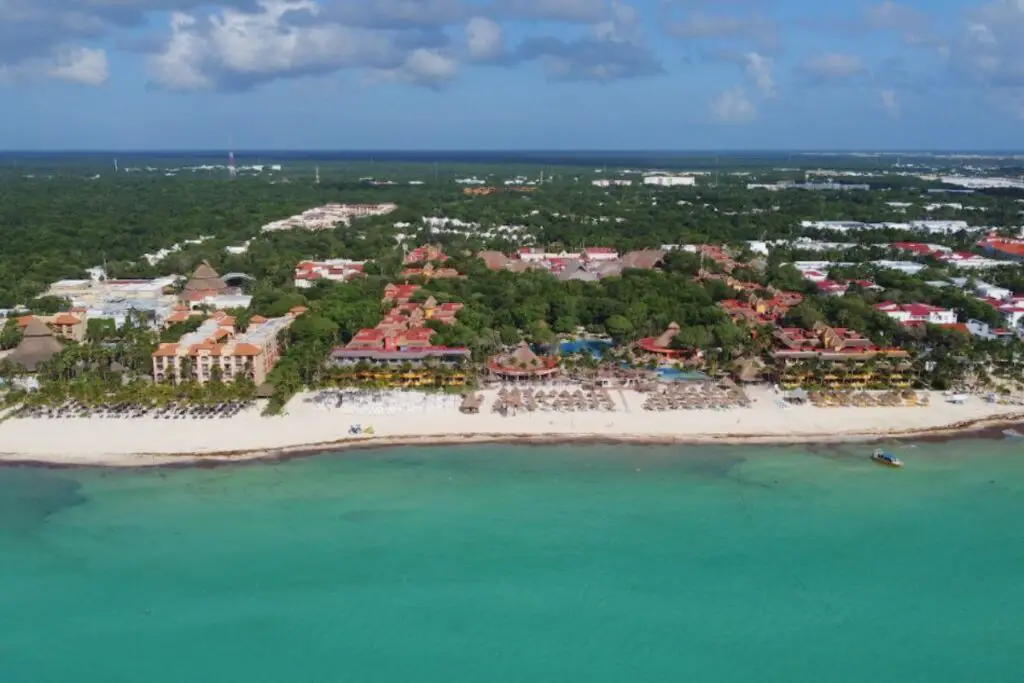
Gated Communities
Similar issues exist in private developments along the coast, such as Puerto Aventuras and Paamul where residents and visitors often find access to the shoreline limited by gates and security guards.
Under the reform, those kinds of barriers could be directly challenged if they block the public from reaching the beachfront.
The interior of a private community would remain private, but land inside the federal maritime-terrestrial zone itself cannot be fenced off or treated as private property.
Any concessions or permits held by hotels or operators inside a gated community would be required to include provisions for public access, and if they fail to comply, their concessions could be revoked. Puerto Aventuras Beach Club may get away with the beachfront dining area but the barriers will likely need to go.
Communities themselves may be obliged to create and maintain designated public pathways through their property or negotiate easements that guarantee the public a way in.
If fully enforced, this reform would mark a major change in how Mexico balances private coastal development with public beach rights. Highly visible locations like Xpu-Há and Puerto Aventuras will likely become test cases in how these rules are interpreted, placing them squarely in the legal and political spotlight.
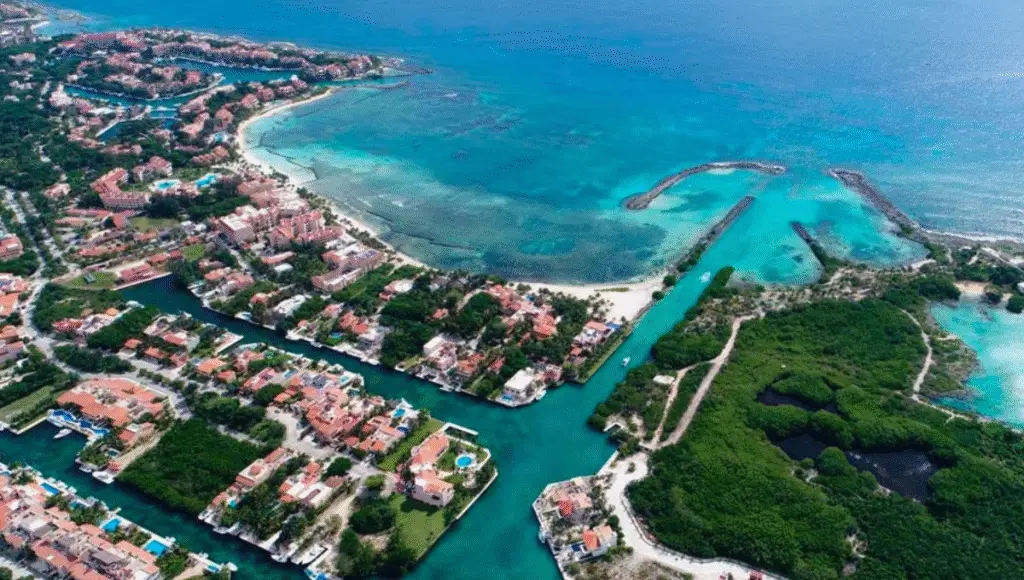
Where the Law Breaks Down
In reality, enforcement has been uneven, especially in Quintana Roo. The so-called 500-meter rule should mean that a resort with one kilometer of beachfront must guarantee at least two public access points through or around its property.
Naturally, hoteliers (and their lawyers) push back, citing guest security, liability concerns, or the design of their complexes. Rather than open corridors through their grounds, they negotiate with municipalities to provide a single access point, usually at one end of the property.
Or, to make the problem go away, the hotel property offers to “contribute funding” for access somewhere else. I think you can guess what that really means….
In the case of Puerto Aventuras, adequate land for access points on both the north and south ends of the community was donated by the developer to the municipality. This donation accommodated the beach access requirement in return for keeping the beach inside the gated community private.
Unfortunately but not surprisingly, these strips of land were quietly “absorbed” by the neighboring hotel properties and cut off from public access leaving locals with no open beach access for many kilometers.
Enforcement in Practice
Over the past decades, courts and activists have challenged beach blockages sporadically, but rulings have been inconsistent, leaving many disputes unresolved.
Municipal governments rarely enforce the rule strictly. Lacking political will or resources, they tend to accept whatever compromise is offered. The result is that access is provided “nearby” but not necessarily where it’s most useful.
In Cancun and Playa del Carmen, numerous official public entrances exist but not at the intervals the regulation intended. Large resorts that span more than 500 meters of beachfront usually meet their obligations with just one access point, even if it is inconveniently located and far from where most people would naturally try to enter. You can see this in real time trying to get to the beach from Playacar Phase 2.
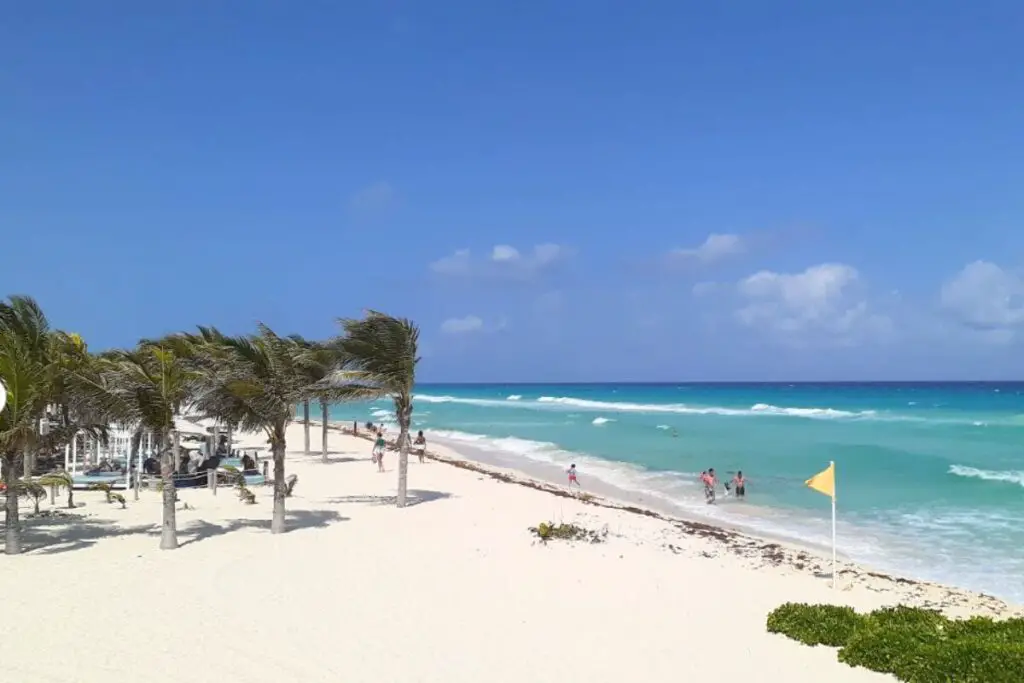
Why It Matters
It’s not just about legal language or technicalities. It’s about the basic principle that Mexico’s beaches belong to everyone. By closing loopholes, tightening compliance, and forcing resorts and municipalities to provide transparent and practical access, the reform aims to make sure that what’s written in law is finally felt in real life.
For locals, it could mean easier, guaranteed entry to beaches that have long been blocked or hidden behind gates. For small-scale fishers and community members, it could mean the ability to maintain traditions and livelihoods without having to fight through private interests. And for visitors, it reinforces the idea that Mexico’s coasts are a shared national treasure, not a privilege sold by the day pass.
If enforced, the law would represent a major cultural and political shift, rebalancing the scales between powerful tourism developers and the public’s constitutional right to the shoreline. Whether in high-profile cases like Tulum and Puerto Aventuras, or in the everyday experience of families trying to reach the sand, this reform has the potential to transform how people connect with Mexico’s coasts for generations to come.

